The initiative to usher ASEAN universities towards a large-scale student exchange and mobility is the collaborative effort between AUN and the Tuning Academy from University of Groningen. The first round of the CALOHEA National Meetings (NM) Now, the NM of CALOHEA are kicking off into the second round, starting with the 8th NM at Universitas Hasanuddin (UNHAS) from 10 to 11 August 2023 at Makassar, Indonesia. For this meeting, University experts, professors, and students for a total audience of over 100 set their sights towards focusing on the challenges of student workload management that has been brought on due to the ongoing rise of multidisciplinary studies, promoting self-learning education, and other modern changes happening in the higher education landscape. Together, speakers, participants, and the audience attending onsite or online through zoom will engage with dialogues and workshop sessions.
The National Meetings of CALOHEA aims to bring together key individuals to represent all the different levels of personnel found within the community of any university. Mainly, this will be the management from high to low, lecturers, researchers, and most importantly the students, all coming together to share good practices and valuable experiences that will contribute to calibrating the best possible system for student exchange and mobility. The focus of the 8th CALOHEA NM was the topic of calculating student workload, as the rising issue as of late has been the fact that many universities do not take account of the time students spend on their own for self studying. The current era in the higher education landscape is moving towards multidisciplinary programmes and developing graduates to be life-long learners. Self-learning is highly encouraged for students because learning does not stop at a degree, it continues on for our whole lives.
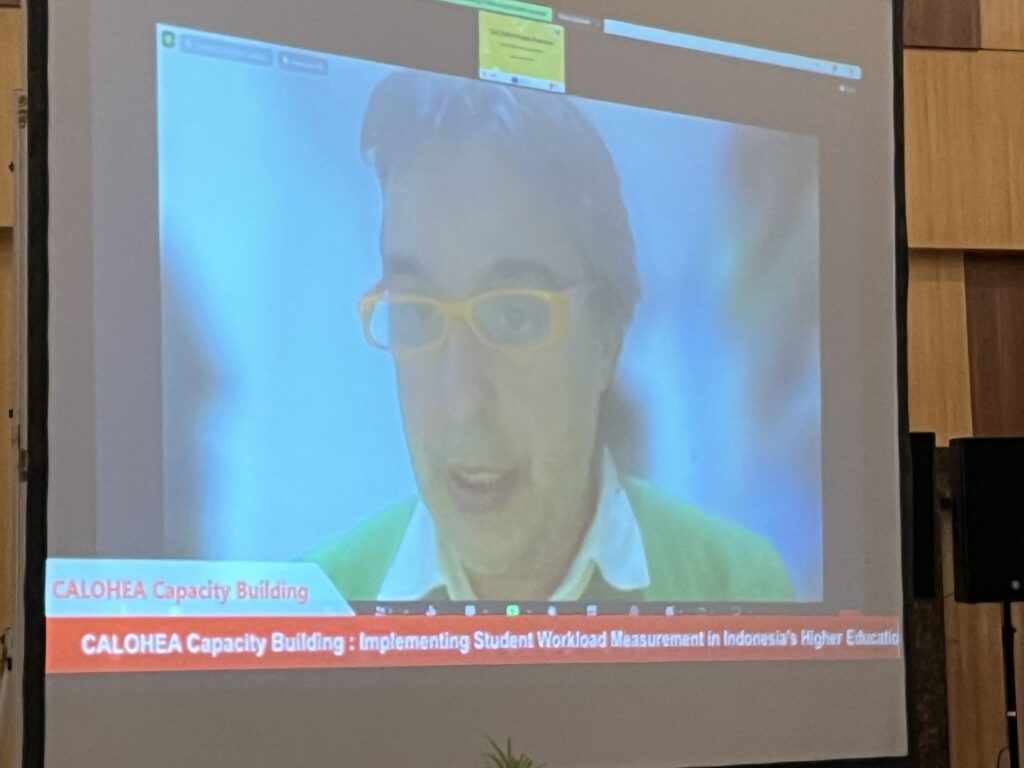
Starting the first day of the 8th CALOHEA NM was a Knowledge Sharing session led by Dr. Pablo Beneitone, International Tuning Academy, University of Groningen, and Mr. Korn Ratanagosoom, First officer and Chief Strategy Officer of the ASEAN University Network, which set the stage for the audience that may not be fully aware of what CALOHEA and the project is about and help them to be familiarized with the 3 Recognition Mechanisms (RM) before the workshops. Following this, the faculty and student representatives from UNHAS had the opportunity to share their practices and experiences at the policy dialogues. Professors of UNHAS from the faculties of Medicine, Civil Engineering, and Teacher Education, along with UNHAS student representatives from Medicine and Civil Engineering, as well as the Director of Makassar Metro Network, Ismail Malliungan, came to share to the audience.
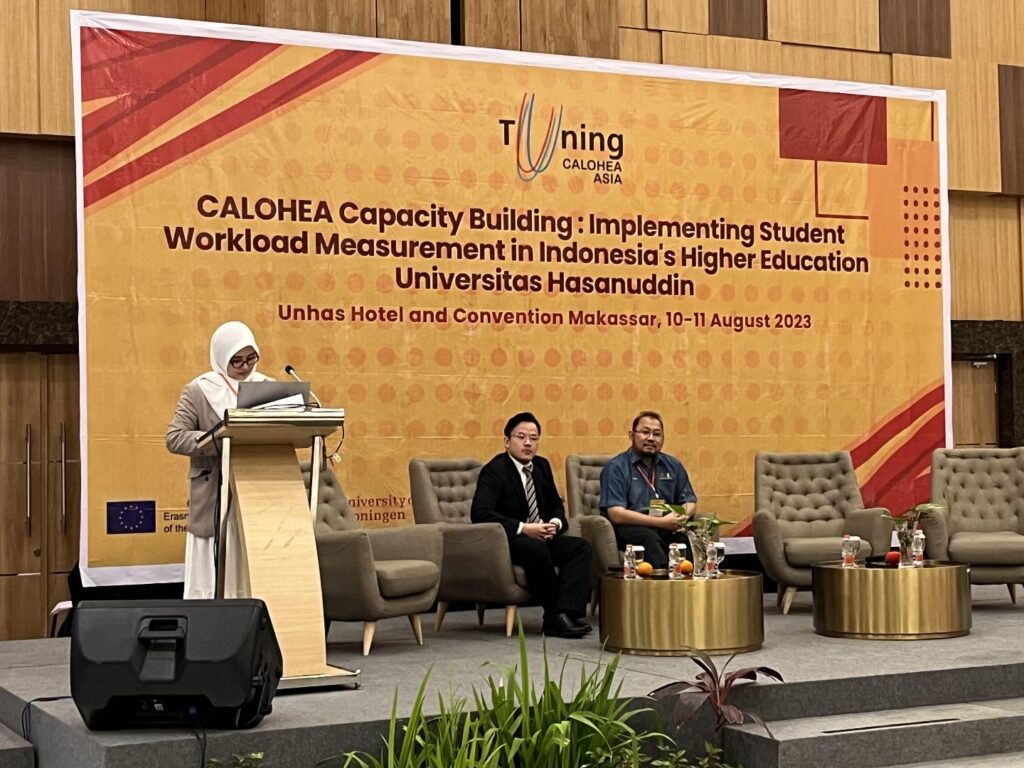

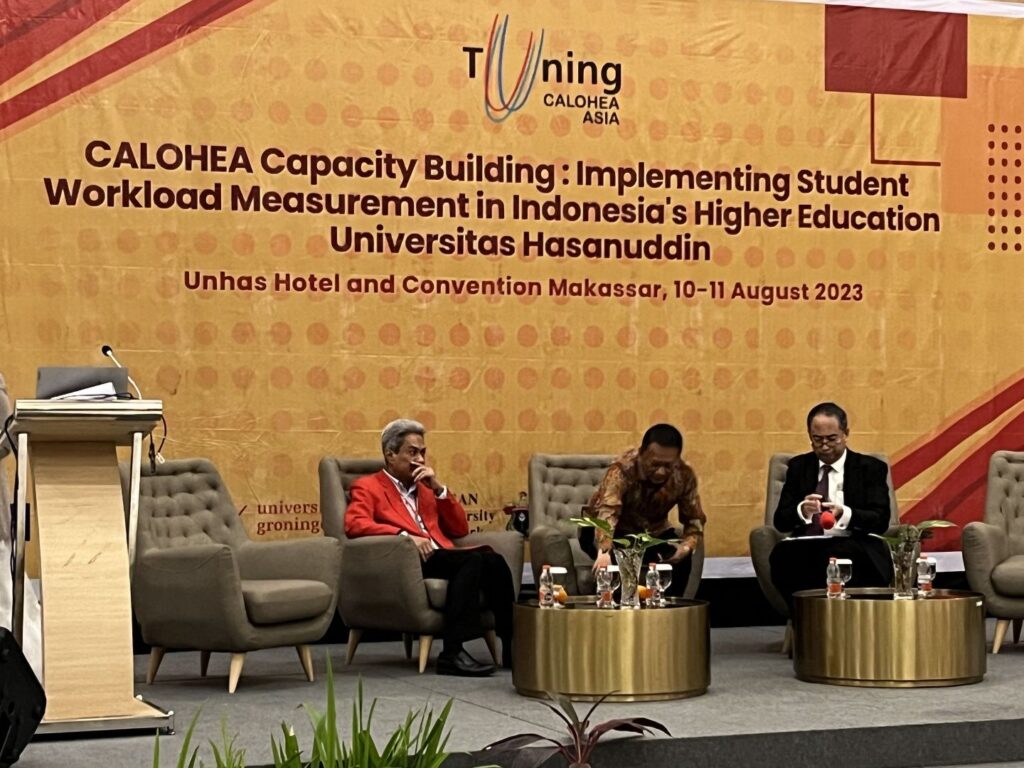

Here, professors and responding faculty staff engaged in dialogue and discussed the process of calculating student workload and recent developments in this process after incorporating CALOHEA and the 3 RMs. In this day and age, university studies are not limited to only contact hours, where the students and professors are physically in the same room and having a lecture. Many students continue their studies in their own independent work, which is often not accounted for when calculating the hours to earn their credits. Faculties at UNHAS, particularly Medicine and Civil Engineering, have taken steps towards a learning environment that accommodates more opportunities for independent work. For example, the Medicine faculty had classes throughout the day that students would physically attend starting at 7:00 A.M. and ranging to 4:00 P.M., which are established as contact hours. To open up more room for independent work, this has been dialed back to 2:00 P.M., providing an extra 2 hour window for students to have their own self studies. In order to ensure that students are utilizing independent work hours effectively, Professors can employ different assessment methods including but not limited to: projects, student diaries, and logbooks.
Afterwards, student representatives from the faculties of Medicine and Civil Engineering also shared their perspective on student workload calculations and the positive effects they have also experienced throughout their whole academic experience from changes that align with CALOHEA RMs.
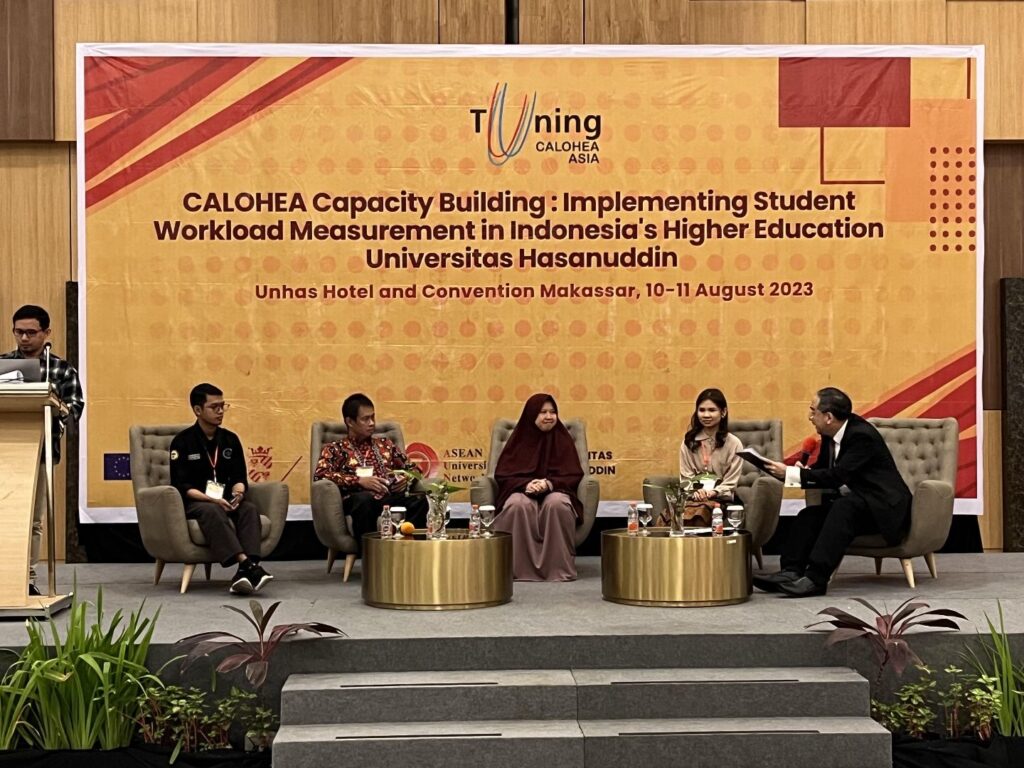

Abdul Salam, Student Representative from Faculty of Civil Engineering, shared his experiences on the topic student mobility. Exchanging and studying in different countries was a great opportunity for him to learn new cultures, make international friends and connections, and to just have a unique and unforgettable experience. But amongst soaking in all the new sights and things to learn, it did come with the issue of time management for contact hours and independent studies. Financial constraints were also a challenge, especially for students exchanging to a country with much higher living costs. Nonetheless, despite the challenges, Abdul is adamant to continue his studies and strive towards Masters in Engineering Management.
Zemira Devita Situmorang, Student Representative from Faculty of Medicine, provided another perspective from a different faculty with more focus on student workload calculation. She also spoke about the contact hour change that was mentioned earlier. At first the transition of returning to in person classes was a challenge for many students coming from the era of online learning during COVID-19, especially when it came to time management. However, the contact hour changes have allowed students like her to dedicate more time towards independent work. Next, she shared her experiences with student exchange and mobility programmes. Being able to study at overseas institutions and having guest lecturers from overseas was a valuable experience for students. For her, she was able to spend a month studying in Japan. However, she raised one major concern that is a challenge for all personnel involved with exchange programmes, which are language barriers. During her time in Japan, a translator assisted with communications, but it was not an ideal educational experience. Credit transfers were also an issue because if time spent in an exchange programme was not accepted, courses may have to be redone and there will be a loss of time. Nonetheless, the experiences she had with exchange programmes and exposure to overseas perspective has opened her eyes wide to the Medical world.
After the dialogue sessions, the practices and experiences that were shared will be crucial to how participants and audiences will move forward with the workshop sessions. It was split into three groups, one for each faculty: Medicine, Civil Engineering, and Teacher Education. On the first day, an overview of the 3 Recognition Mechanisms were given in each workshop session for each faculty to prepare for the next day. So then came the second day and each faculty had 3 sessions on each following topics:
– Student Workload and Regional Competency Frameworks
– Authentic Assessment and Student Workloads
– Implementing Student Workload Measurement for internationally compatible, comparable, transferable, and verifiable (CCTV) learning outcomes.
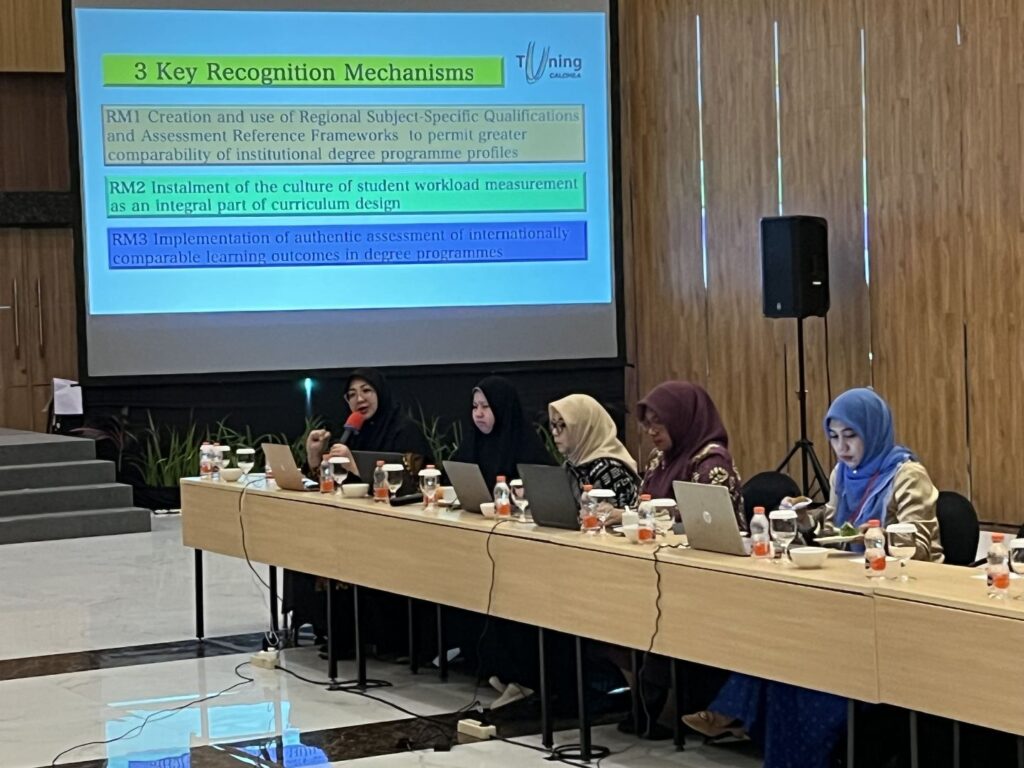

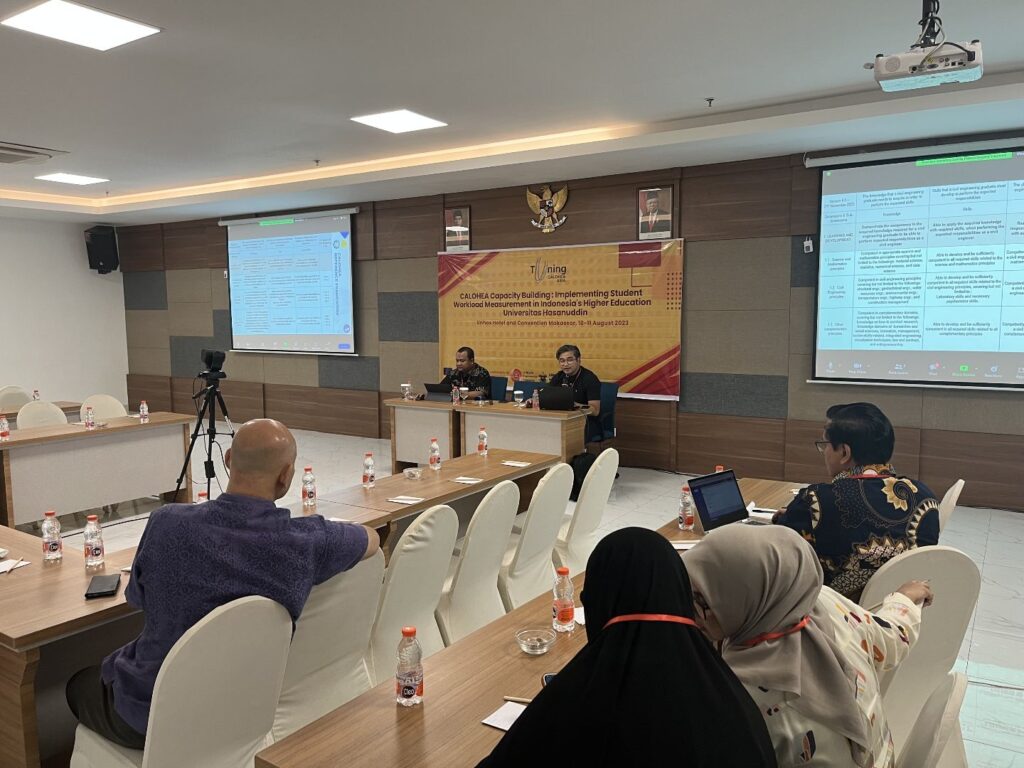

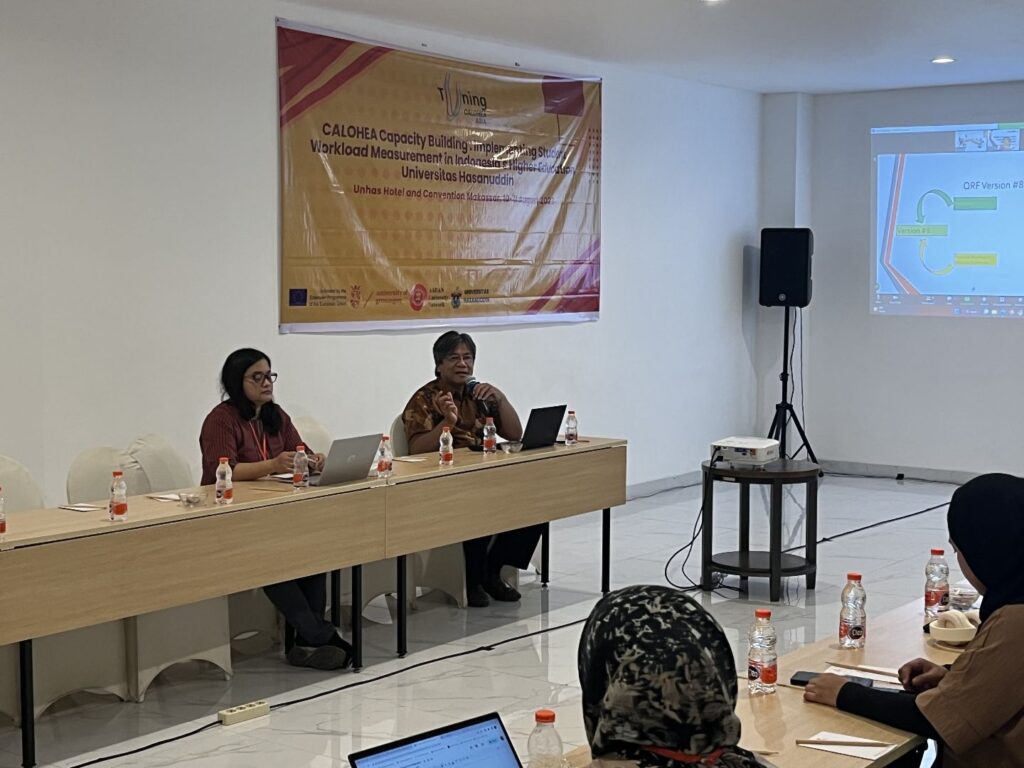

Testimonials
How do you think CALOHEA has benefitted you or your institution?
Nurwati Djam’an, Head of Study Programme, Education, Universitas Negeri Makassar
“Actually, this is just a new thing that I came to know, but from the presentations of the speakers, it benefits the workload, we have to reflect on our curriculums. Especially for me in my study programme to make justice for our students with their workload, and also about our teaching methods, and important things about internationalization. So other students can come to our study programmes and our students can go to others with balanced workloads.”
Dr. Rina Masadah, Lecturer at Hasanuddin University, Faculty of Medicine
“I think the CALOHEA project is very important and very useful for us at Hasanuddin University because it is for internationalization and recognition, so our university will be recognized internationally. For the programme, with RM one, two, and three, I think it is very good as we now have data from surveys and also we have the framework from all the tasks of the CALOHEA project. We are now socializing and disseminating all of our results of discussion of the CALOHEA tasks to the national Indonesian people, also for the stakeholder, the students, and the policy makers in Indonesia. The application we have now is in my faculty because we already know the student workload. We have the data of the student workload, we already have the focus group discussion, we have the survey data and collected them. So now we are making a big change in student time because we are being more blended. So we have reduced the hours of direct contact in the class. Students are doing more clinical skill applications, doing tutorials, discussing cases, and watching videos. Now we know it is effective and its benefits have an advantage for the curriculum, for the subject. The student can be online and blended. For the assessment, one of the RMs covered authentic assessment, so we did an evaluation of our questions in the exams and tests. So now we are more ready to test clinics, skills, and everything.”‘
Prof. Dr. Ir. Musrizal Muin, M.Sc., Head of Institute of Quality Assurance and Educational Development, Universitas Hasanuddin
“My field of study is forestry, especially wood technology. But since 2018, I was appointed to be a part of the institute for educational development and CALOHEA actually came to my mind 2 years ago since I heard from the Faculty of Medicine and Engineering there is this project called CALOHEA. And it is going to explore some educational things related to students and curriculum. That is why I am very interested and hope for it to be a part of my work to develop something related to the curriculum, and the teaching and learning process in the university. Institutionally, in the new coming academic year, for new students, we are going to implement a new curriculum with the contents of independent learning activities administered through an online system. Looking at the scope of the CALOHEA Project, it’ll be beneficial for us if we can adopt the appropriate tools of workload measurement being developed to make the full student workload explicit, including the quantification of independent learning activities.”
Asty Amalia Nurhadi, MD at Faculty of Medicine Hasanuddin University
“So joining CALOHEA at first opened up our opportunities for collaboration not only with the same institutions from Indonesia, but also with international institutions from Malaysia, Philippines, and Vietnam. Of course, it will be an opportunity for us to nurture our collaborations not only in CALOHEA but also in other fields. Especially for the recognition mechanisms, it gives us the opportunity to reflect on our curriculum, about our framework, about our student workload, and also about the assessment, is it authentic or not authentic? And we also can give comparisons to how our curriculum is with other countries and other institutions.”
Abdul Salam, Student Representative from Faculty of Civil Engineering (UNHAS)
“CALOHEA has given me a chance to tell and have sharing sessions with other people and gave me exposure to develop myself especially and also given me one of the opportunities to continue my study in the next year.”
Zemira Devita Situmorang, Student Representative from Faculty of Medicine (UNHAS)
“I think first of all, CALOHEA has built a lot of confidence. Before I was not really used to speaking in front of such an international audience like this. So I think it has built a lot of confidence but also benefited not just me but other medical students, especially about the workload, especially the workload today could be pushed down a little bit. With the talk with the speaker today, Dr. Amelia is also my teacher. She is one of the academic teachers. So I think it just kind of gave us a space to talk about how much is the workload the student has and how much pressure maybe the teachers or lecturers have given to us. So I hope by this with CALOHEA, this will open other people’s eyes and widen about the hardship that we have as medical students, but also viewing it from the other perspective like from the teacher’s perspective and staff perspective I think is how CALOHEA benefited me.”
To gather feedback, what are your opinions on the CALOHEA Recognition mechanisms?
Rini Rachmawaty, S.Kep., Ns., MN, PhD, Secretary of the Institute for Quality Assurance and Educational Development of UNHAS
“The framework that they have already established now is very comprehensive and is very relevant with the rubric or the self assessment report that is coming from other international accreditation agencies. So it means that if the Faculty of Medicine around the Southeast Asian countries implemented this kind of framework into their curriculum, they will easily join or participate in the international accreditation because it is very related to the profiles and to the framework around the world. So for example, like from the World Federation for Medical Education, they also have their own domains, and when I see this framework, it’s more comprehensive and it’s good because it’s so these Asian countries’ characters, and we need more like this framework. And so I hope these recognition mechanisms and also national meetings can conclude with one framework and can be approved because this is very important. Once the framework is already designed, it needs to be approved by the Association of Medical Education. If it is approved, that means all study programmes, not only in Indonesia, but also in South East Asian countries, can implement, directly, this framework.”
Asty Amalia Nurhadi, MD at Faculty of Medicine Hasanuddin University
“For Recognition Mechanism 1, because it is about the framework, we would like to recommend to further widen the socialization of this framework so everyone in Indonesia especially can know about this framework and how it has already been adjusted to other Asian countries and also in Europe, so it can also become the consideration of our collegium later on. And we can adapt this framework into our country. For the Recognition Mechanism two, for the student workload, the four tools can be used for them all and it can be a standardized tool that we can use to measure the student workload. For authentic assessment of course it is very useful for us because not all faculties in Indonesia already implement the authentic assessment. And of course, by giving them news about this type of assessment, they can improve more in their education.”
Dr. Rina Masadah, Lecturer at Hasanuddin University, Faculty of Medicine
“I think the recognition mechanism is very good in general and it needs more specifics because every university, every institution, and every region has unique, local specifics of the recognition mechanism. For example, Indonesia, because my country consists of lots of islands and how to do the authentic assessments to the students who are at the remote islands. How to assess and evaluate their work and study in a remote area? So I think generally it’s very good for all the recognition mechanisms. But it should add some specific points for each institution or each country.”



